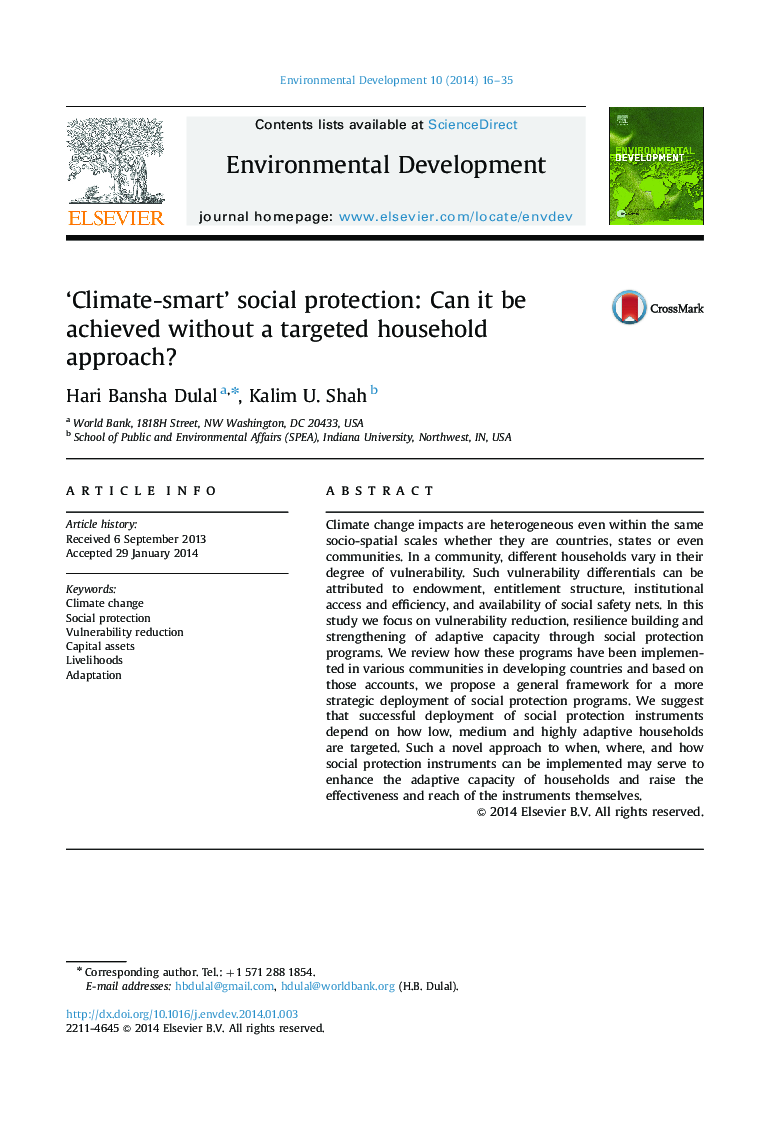| کد مقاله | کد نشریه | سال انتشار | مقاله انگلیسی | نسخه تمام متن |
|---|---|---|---|---|
| 4391456 | 1618091 | 2014 | 20 صفحه PDF | دانلود رایگان |

• We propose frameworks for the use of social protection instruments to reduce vulnerability to climate change and climate induced extreme weather events.
• Method to classify vulnerable households are proposed.
• Target points for the use of social protection instruments are proposed.
Climate change impacts are heterogeneous even within the same socio-spatial scales whether they are countries, states or even communities. In a community, different households vary in their degree of vulnerability. Such vulnerability differentials can be attributed to endowment, entitlement structure, institutional access and efficiency, and availability of social safety nets. In this study we focus on vulnerability reduction, resilience building and strengthening of adaptive capacity through social protection programs. We review how these programs have been implemented in various communities in developing countries and based on those accounts, we propose a general framework for a more strategic deployment of social protection programs. We suggest that successful deployment of social protection instruments depend on how low, medium and highly adaptive households are targeted. Such a novel approach to when, where, and how social protection instruments can be implemented may serve to enhance the adaptive capacity of households and raise the effectiveness and reach of the instruments themselves.
Journal: Environmental Development - Volume 10, April 2014, Pages 16–35